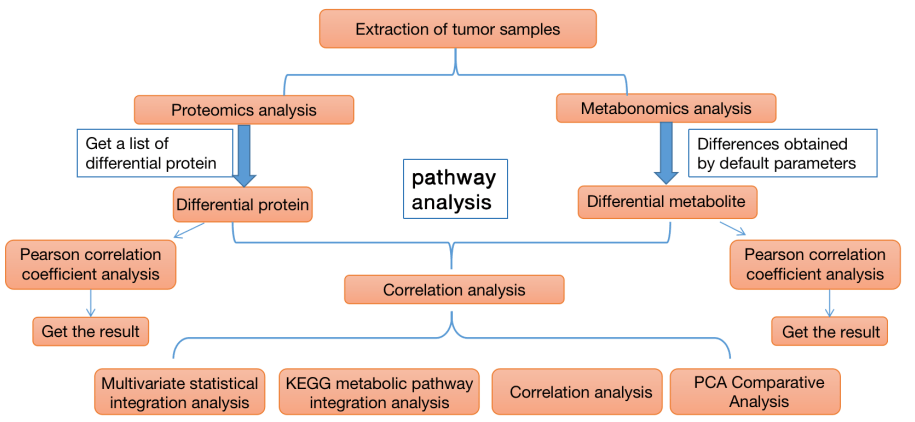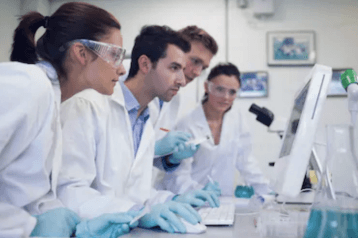The combined analysis of tumor proteomics and metabolomics refers to the statistical analysis of normalized processing, comparative analysis and correlation analysis on batch data of different biomolecule levels of the two to establish data relationships between different levels of molecules. We combine the analysis of biological functions such as GO function analysis, metabolic pathway enrichment, and molecular interaction to systematically and comprehensively analyze biomolecular functions and regulatory mechanisms. Our integrated analysis of omics data can verify each other on the one hand, and also complement each other. Finally, we can comprehensively understand the megatrends and directions of biological change, and propose a molecular biological change mechanism model for researchers to follow up Experimental analysis and application.
 Figure 1. Flow chart of correlation analysis between Proteomics and Metabolomics
Figure 1. Flow chart of correlation analysis between Proteomics and Metabolomics

Our advantage

We can achieve full spectrum analysis of tumor proteins and metabolites, and the mutual verification effect is more obvious.
We explain the molecular regulation-phenotype association mechanism, and systematically analyze the molecular functions and regulatory mechanisms of tumors.
From the huge amount of data to remove the false and save the truth, select the key metabolic pathways or genes and metabolites for subsequent in-depth tumor experimental analysis and application.

Sample requiremen

Protein samples:
Tumor tissues, etc.
Protein: Total amount ≥ 500 ug, concentration ≥ 1ug/ul.
Tissue sample: 50-100 mg
Metabolome analysis samples:
Tumor cells, tissues, urine, whole blood, serum, plasma, etc.
Recommended starting amount (single): plasma or serum > 300 μL, urine > 5 mL, tissue > 100 mg, and cells > 107.
Sampling Kit: we provide our customers with a complete sampling kit
Deliverables: raw sequencing data, pruning and stitching sequences, quality control report results, statistics and bioinformatics reports you specify, visual pictures.
* For Research Use Only. Not for use in the treatment or diagnosis of disease.

 Figure 1. Flow chart of correlation analysis between Proteomics and Metabolomics
Figure 1. Flow chart of correlation analysis between Proteomics and Metabolomics


